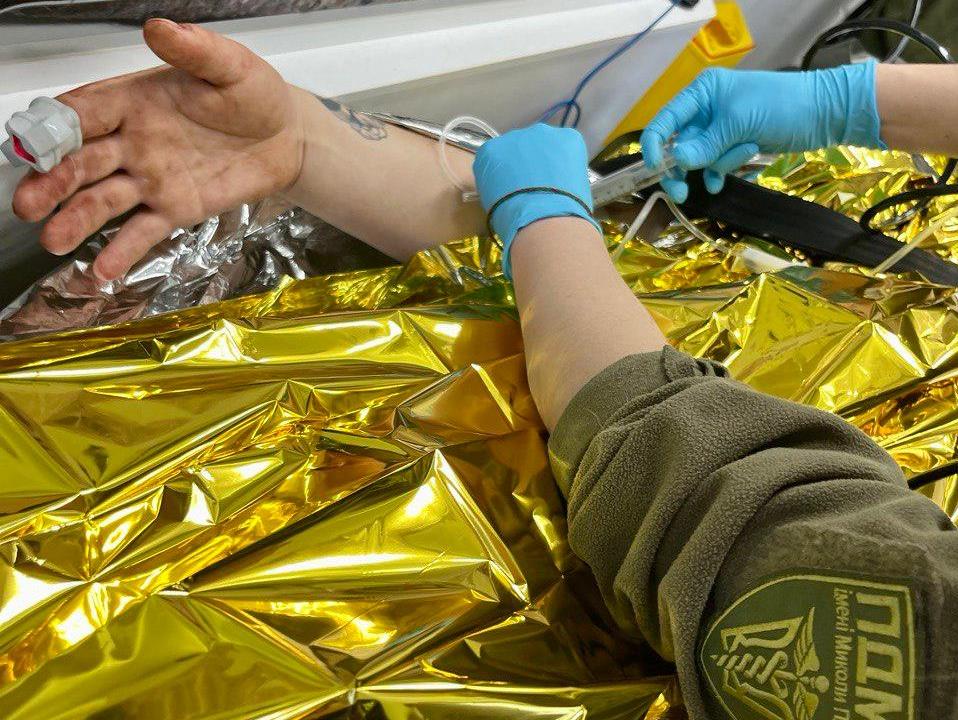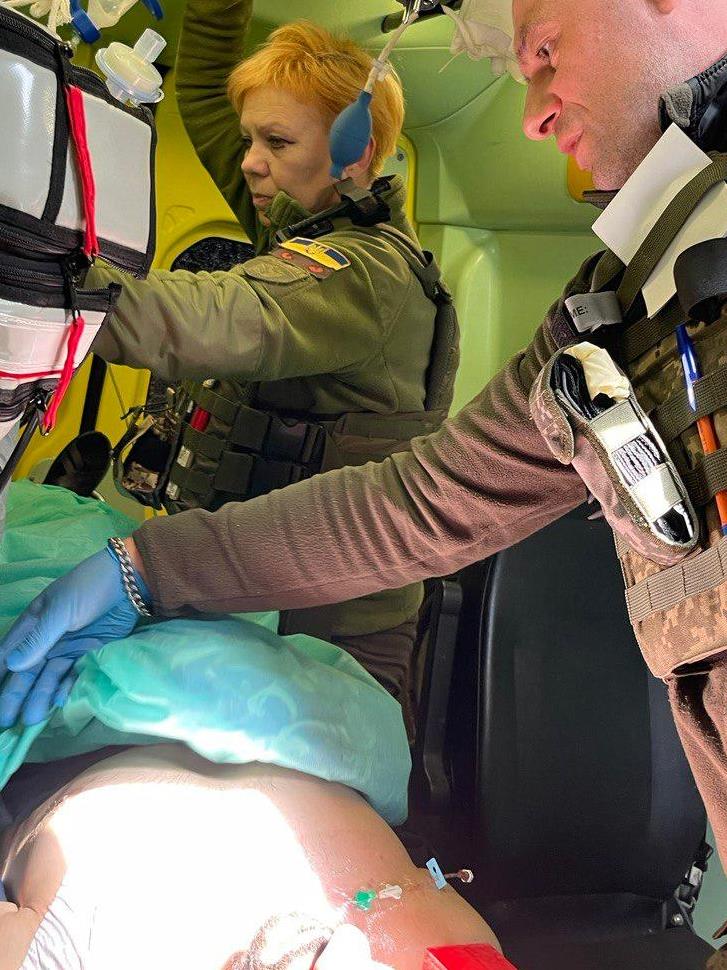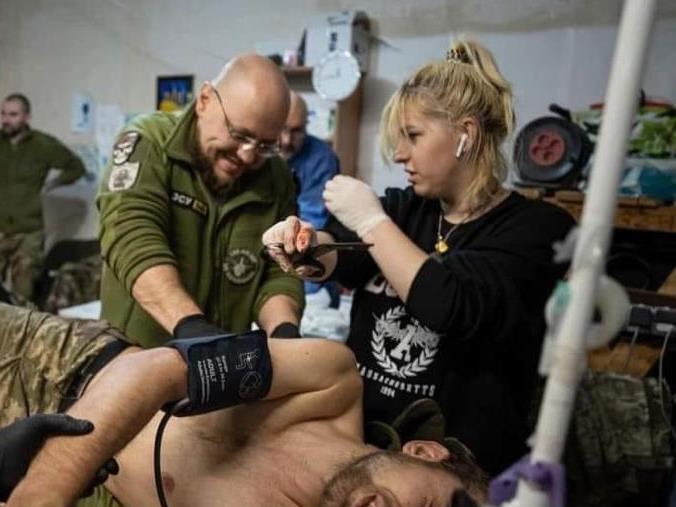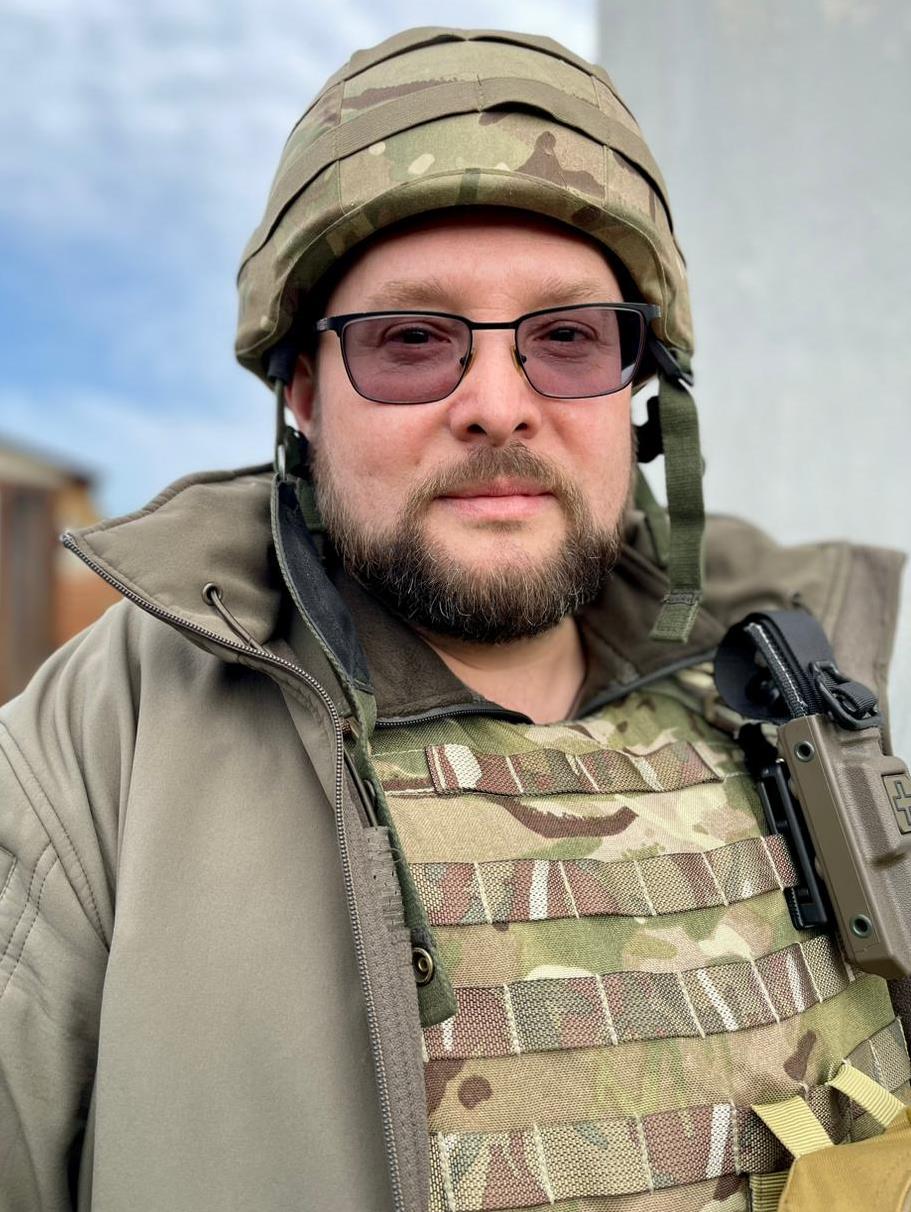
The Times’ Bakhmut story features PFVMH medics in action
“The flash of blue lights cut through the darkness, speeding towards the battlefield. As the ambulance braked, the lights were turned off and paramedics jumped out, grabbing a stretcher on which an unconscious soldier lay,” Catherine Philp of The Times begins her report from Bakhmut in eastern Ukraine, featuring the operation of volunteer medics.
According to the story, the strain on Ukraine’s military makes it increasingly resort to help from volunteer NGOs such as the Pirogov First Volunteer Mobile Hospital (PFVMH) to provide medical support for its wounded warriors. Western officials estimate that Ukraine is three times more successful at saving the lives of its wounded defenders than Russia is regarding its cannon fodder.
“For months doctors around Bakhmut mostly treated injuries from blasts and shelling in a bloody artillery duel across the city. In recent weeks, however, the fighting has descended to street to street, with Ukrainians and Russians fighting only meters apart, often in adjacent ruined buildings and sometimes for control of the same one, inviting comparisons with Stalingrad,” the story reads.
In November, Olena, a trainee doctor from Kyiv, took leave from her job in a private oncology clinic to volunteer on the front line.
“When I saw what it is happening here, it broke my heart. I decided I can’t stay in a good job with a good salary in a safe place when I have the knowledge that can help save our soldiers’ lives.”
Unable to get further leave from her job, she resigned and moved to work in the former civilian hospital in Bakhmut, operating under shelling and gunfire until it was destroyed by Russian airstrikes.
Irina, a cardiology intern from Kyiv, assisted with evacuating the wounded from Irpin and Bucha, the suburbs around the capital the Russians reached before being forced back. What she saw there inspired her to come to Bakhmut last June with the first civilian team.
“In some way [Kyiv] was harder, because we were operating on children that were being pulled from the rubble after bombings. We would be performing surgery while everything around us was exploding.”
In Bakhmut, evacuating the wounded is far from straightforward, according to infectiologist and general practitioner Maksym, an assistant professor at the Kharkiv National Medical University. “The main problem is getting people out. It is constant shelling, gunfire and bombing. And even we are the targets.”
The single road into Bakhmut still controlled by the Ukrainians comes under daily shelling and attack by the Russians. Bringing in supplies and taking out the wounded, it has become known as “the road of life.”
“Patrick,” whose call sign reflects his blue eyes and red hair, took leave from his job as an anesthesiology intern to volunteer on the eastern front. “I’m a big fan of anesthetic, it stops them complaining,” he joked with the black humor of a battlefield veteran.
On his first tour, he was stationed at Soledar, north of Bakhmut, as the Russians captured it. “The worst [cases] are sent to us, the ones with the worst multiple injuries.” The worst casualties, Patrick says, are “when the body is alive but the person is gone. You know you won’t bring them back but you always carry on.”
Read the whole story on The Times website.








